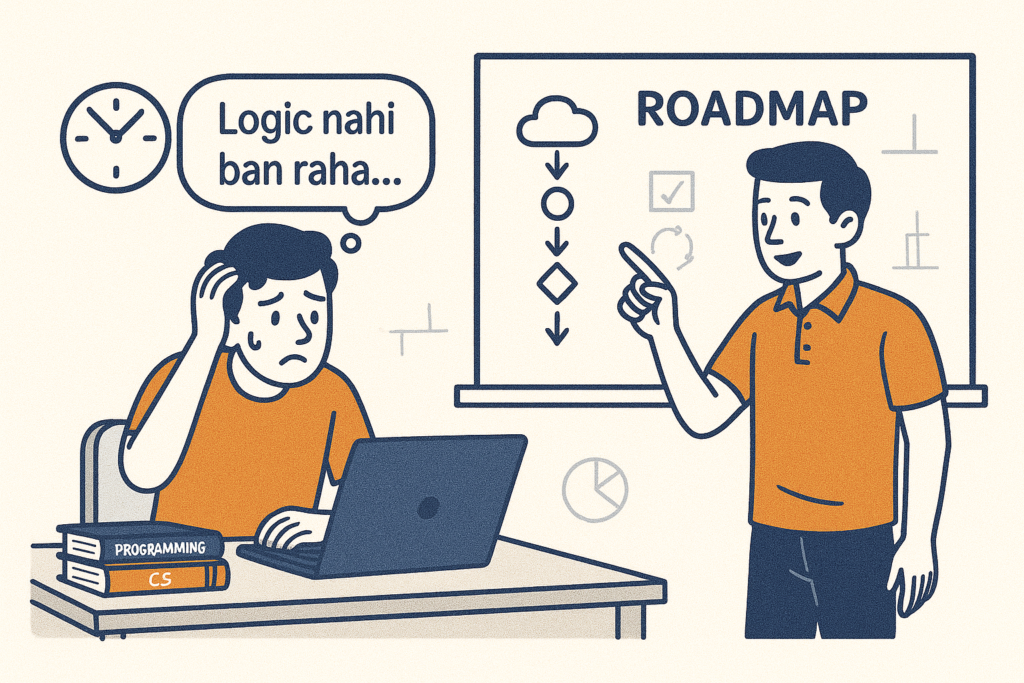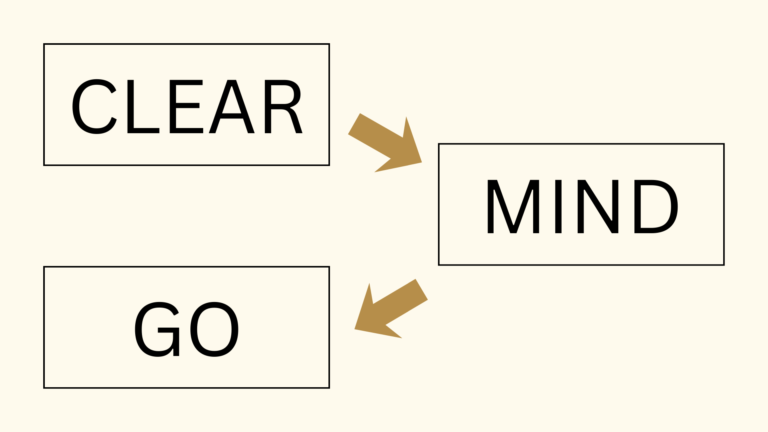Tackle Any Coding Question in Indian Placement Tests
Even If You Panic

“Ever opened a coding question in a placement test and just… froze?
You don’t know where to start. You read the question 5 times, still no clue.
Your brain says: ‘Logic nahi ban raha’, and panic sets in.
Been there. Faced it. Survived it.
Here’s the truth no one tells you:
You don’t need to be a genius to solve coding questions — you just need a calm mind and a step-by-step system.
Step-by-Step Framework: CLEAR MIND GO
It’s simple, practical, 11-step system to solve coding problems without fear and written for students like us — who don’t come from top IITs, but want to crack real placements.
Let’s break the fear and finally figure out how to approach coding questions — even if you panic.”

C – Check the Question (3x)
First time: Just get the vibe.
Second time: Look for what is asked.
Third time: Read slowly and underline key actions (e.g., sort, count, return, print).
L – Look at the Example
- Most students skip this. You don’t.
Try to reverse-engineer why the output is what it is.
E – Erase DSA from Mind (for now)
- Don’t Think About DSA Yet.
- You don’t need to shout “HashMap!” after 5 seconds. Logic first, tools later.
A – Analyze the Constraints
- Is n ≤ 100 or n ≤ 10⁵?
- This tells you if brute force is okay or not.
R – Reframe the Problem
Ask the following:
What’s the input?
What’s the output?
What exactly needs to be done?
M – Make Your Own Examples
- Make 1–2 custom test cases. It’ll clear the logic fog instantly.
I – Identify Edge Cases
Ask the following:
What if input is empty?
- What if it’s just 1 element?
- What if all elements are same?
N – Naive/Brute-Force First
- Now Think Brute-Force. I once wasted 15 minutes using ‘HashMap!’ without realising brute force would have worked. Don’t repeat my mistake.
- Think what is the most basic way to solve this — even if it’s slow?
- You’ll use this to compare later with the optimised one.
D – Decide Time Complexity
- Is it O(n²)? Can I improve it?
- If it looks too slow, it’s time to think smarter.
G – Grab the Right Data Structure
- Now Bring In DSA.
- Ask ‘What data structure will help me reduce time?’
- Arrays, HashMaps, Stacks — bring only what you need.
O – Optimize & Finalize
- Cab you do sorting to save time?
- Can you store & reuse something?
Next time you see a scary coding question in placements, remember: don’t panic. Just run ‘CLEAR MIND GO’ step by step. You’ll look calm, while others are sweating. And this calmness will be noticed by interviewers. All The Best.